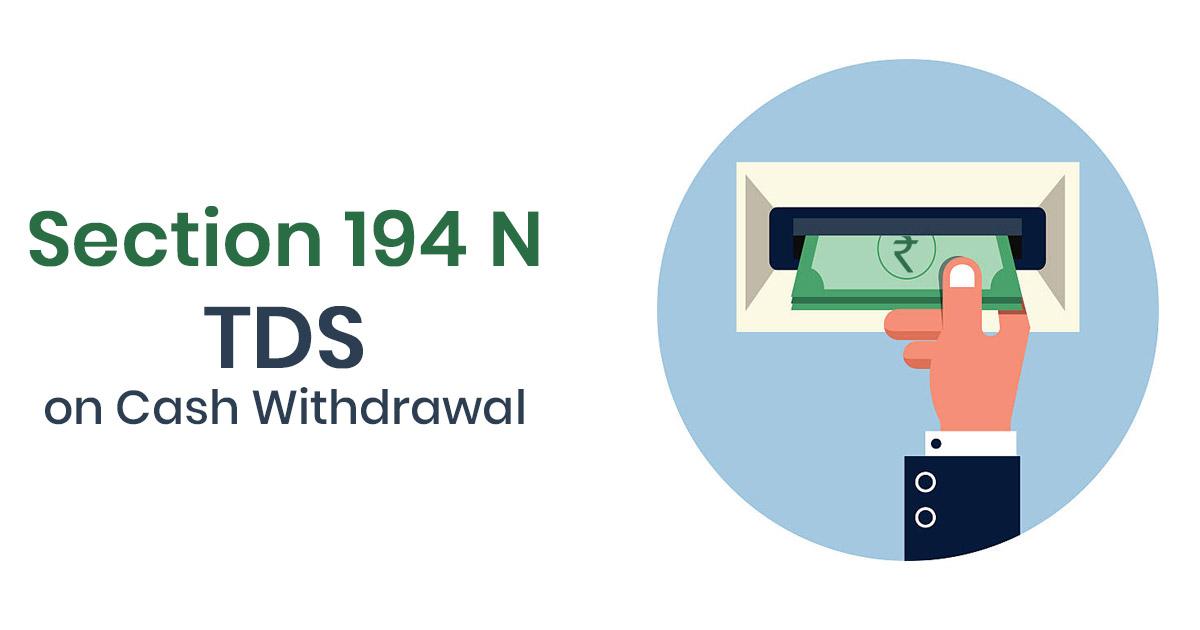Section 194N – TDS on Cash withdrawal of more than 1 crore
Meta Description: Finance Minister Nirmala Sitharaman delivered her maiden Union Budget on 5th July, 2019. It included a Section 194N where tax would be deducted for withdrawals exceeding ₹1 crore.
Since assuming office as the Minister of Finance and Corporate Affairs on 30th May, 2019, Nirmal Sitharaman delivered her maiden Union Budget on 5th July, 2019. The budget expressed its concerns about paying cash and encouraged the normalisation of digital payments more.
The encouragement of digital payments became more prominent with the introduction of Section 194N for tax deduction at source (TDS) on cash withdrawals of more than ₹1 crore.
About Section 194N
On the surface, Section 194N refers to the deduction of tax at source if, in a particular financial year, over ₹1 crore worth of cash is withdrawn. The section will be applied to payments made after 1st September, 2019.
But here’s the catch!
When is Section 194N applicable?
The section 194N is applicable only if –
- The withdrawals are made by an individual taxpayer
- The withdrawals are made by an undivided Hindu family
- The withdrawals are made by a company, a partnership firm, or an LLP
- The withdrawals are made by a local authority
- The withdrawals are made by an Association of Person (AoP) or Body of Individuals (BoI)
When is Section 194N not applicable?
The section 194N is not applicable only if –
- Cash withdrawals are made by Central or State Government
- Cash withdrawals are made by banks or co-op banks
- Cash withdrawals are made by a post office
- Cash withdrawals are made by banking correspondents
- Cash withdrawals are made by white label ATM operators
- Cash withdrawals are made by the Government in consultation with Reserve Bank of India (RBI)
However, the ₹1 crore limit is for a bank or post office account, instead of being for an individual account. A person can withdraw as much cash as they want without having to pay TDS if the accounts are in different banks. A bank will deduct TDS under Section 194N only if an account holder withdraws more than ₹1 crore in a particular fiscal year.
If the taxpayer pays over the required amount through a bearer cheque issued to a third party, the cash is received by the third party and the bank doesn’t make the payment to the taxpayer.
Thus, a question arises if the situation can be covered under Section 194N by making the bank liable to deduct tax from the original account holder’s account.
For business payments made through a bearer cheque, transactions will not be allowed due to Section 40(A)(3) of the Income Tax Act.
Rate of TDS under Section 194N
The Finance Ministry has decided on a 2% rate of tax deduction for withdrawals that exceed ₹1 crore.
Clause of TDS under Section 194N
As we know, TDS will be deducted only when the cash withdrawal exceeds ₹1 crore. For example, if a person withdraws ₹99 lakh in the financial year, and then withdraws a further ₹1,50,000 in the next attempt, the TDS liability will only be accounted for the excess amount of ₹50,000.
Given the current announcements done by the Finance Ministry, the tax deduction started only for the withdrawals from and after 1st September, 2019. They also decided that the cash withdrawals made prior to 1st September, 2019 would not fall under Section 194N and would not require a tax deduction.


